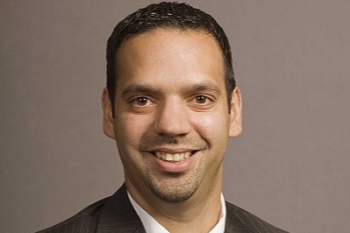
Supporting thousands of jobs at manufacturing facilities and in supporting services throughout the country, the wind industry is already a major contributor to America’s clean energy economy. A new Energy Department report highlights how the growth of the U.S. wind industry could lead to even more highly skilled jobs in many categories.
The Energy Department’s recently released Wind Vision Report analyzes a robust wind energy future and quantifies the environmental, social, economic benefits from wind through 2050. As a part of this scenario, more than 600,000 wind-related jobs could be supported, accelerating the already tremendous growth of the American wind industry.
Complementing America’s 500 wind manufacturing facilities, the industry currently supports more than 50,000 jobs in services such as manufacturing, installation, and maintenance in almost every state, helping wind become a larger part of our country’s clean energy mix.
To estimate the number of potential wind-related jobs by 2050, the Wind Vision Report used the Jobs and Economic Development Impact model maintained by the National Renewable Energy Laboratory. The tool is widely used by county and state decision-makers, public utility commissions, potential project owners, and others estimating the potential economic impacts of new electricity generation projects.
As the industry continues its rapid growth, demand will accelerate for workers who can develop, construct, operate, and maintain wind projects. In addition, America will need workers up and down the supply chain to manufacture and assemble turbine components and provide financial, legal, and other support services. These workers will also stimulate local economies through their spending, which will spur additional hiring and business growth in their communities.
Here are just a few of the many professions supported by a thriving wind industry:
- Manufacturing
Wind turbines are primarily constructed of materials such as steel, fiberglass, copper, and aluminum, increasing the need for workers who have experience working with these materials. These clean energy manufacturing jobs will help produce the next generation of wind turbine components that will be bigger and more efficient than ever. As wind energy expands into new areas of the country, innovative technologies, manufactured efficiently, will make it possible to harness wind resources found at low wind-speed sites, such as those in the southeastern United States.
- Transportation, Installation, and Maintenance
As developers install wind turbines across the country, specialized fleets of workers will transport massive wind turbine components safely across our highways. Upon arrival at these project sites, diverse and skilled workers—from crane operators and welders to engineers and safety inspectors—will safely and securely install each individual wind turbine. As they continue to operate, wind turbines undergo routine maintenance to ensure every component performs at full capacity. A quarter of the lifetime expenses associated with wind turbines go toward operations and maintenance, highlighting the need for a skilled local labor force.
- Transmission
Many sites with high quality wind resources have minimal or no access to electrical transmission facilities. This creates a potential bottleneck to cost-effective wind deployment. Generating 35% of our country’s electricity from wind power by 2050 will require America to install new transmission lines to transport this clean, renewable energy from wind energy sites to homes, businesses, and schools. On average, the United States already installs more than 870 miles of new transmission lines each year. The Wind Vision Report illustrates the need for continued installation at or beyond this level in order to help achieve the robust levels of wind energy examined in the report.
- Offshore Wind
With the country stepping closer to installing the first utility-scale wind turbines in U.S. waters, offshore wind energy is also a potential engine for job creation. America already has a number of ports that could be modified to support offshore wind development. The installation of offshore wind turbines will not only produce jobs in manufacturing, transportation, and installation, but will also support a skilled maritime workforce and provide numerous other economic benefits to coastal communities.
To bolster the wind energy workforce, our Wind Program maintains a Wind Career Map that enables individuals to match their unique skillset with a job in the wind industry. The wind industry relies on a diverse set of engineers, professors, scientists, bankers, lawyers, utility operators and analysts—to name a few—to keep the blades spinning around the clock and power American homes and businesses with clean, renewable energy. Go to energy.gov/windvision to learn more about how a strong wind industry future could lead to greater economic opportunities for all Americans.




